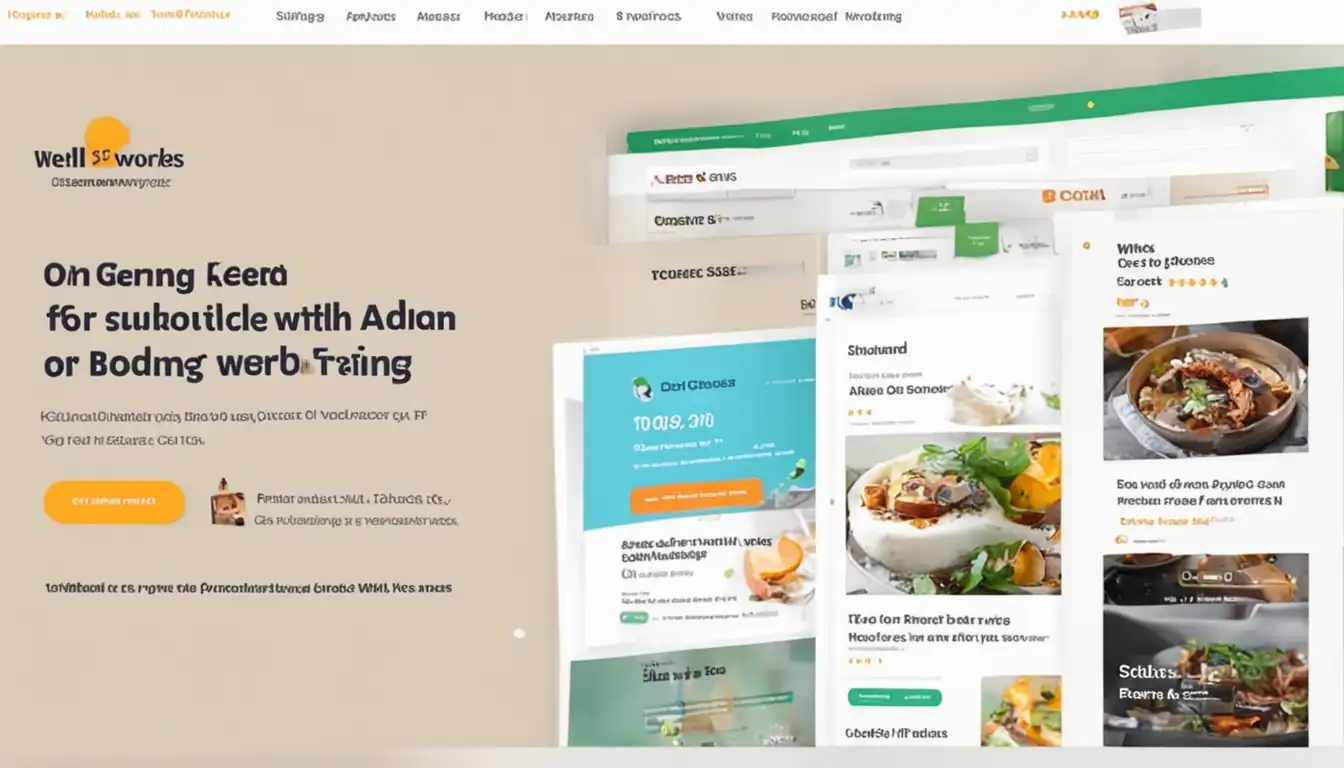Mastering the Art of SEO Writing: A Deep Dive into Crafting Content That Ranks

Mastering the art of SEO writing is crucial for any content creator looking to rank higher in search engine results. By understanding the intersection of creativity and optimization, crafting compelling titles, and conducting thorough keyword research, you can create content that resonates with both readers and search engines.
SEO writing is a unique blend of creativity and optimization that aims to improve a website's visibility in search engine results. It involves strategically incorporating relevant keywords and phrases into high-quality content to attract organic traffic. This approach differs from traditional content creation in that it prioritizes search engine algorithms and user intent over purely creative expression. While traditional content creation focuses on storytelling and engaging the audience, SEO writing requires a balance between creativity and technical optimization to achieve the desired results.
Crafting Compelling Titles with Keywords in Mind
When it comes to crafting SEO-friendly content, the title is one of the most important elements. Not only does it need to grab the reader's attention, but it also needs to include relevant keywords to improve search engine visibility. A compelling title can make or break the success of your content.
Here are some tips for crafting titles with keywords in mind:
Research relevant keywords: Before crafting your title, take the time to research relevant keywords related to your content. Use tools like Google Keyword Planner or SEMrush to identify popular and relevant keywords that you can incorporate into your title.
Include the main keyword: Once you've identified the main keyword for your content, be sure to include it in your title. This will not only help improve your content's visibility in search engine results but also signal to readers that your content is relevant to their search query.
Be compelling and concise: While it's important to include keywords, it's equally important to craft a title that is compelling and concise. Avoid keyword stuffing and instead focus on creating a title that entices readers to click through and engage with your content.
Meta Descriptions: Your Content's Sneak Peek
In addition to crafting compelling titles, meta descriptions play a crucial role in attracting readers to your content. Think of the meta description as your content's sneak peek – it's the first impression readers will have of your content in search engine results.
Here are some tips for creating effective meta descriptions:
Keep it concise: Meta descriptions should be concise, typically around 150-160 characters. Use this limited space to provide a brief summary of your content and entice readers to click through.
Incorporate keywords: Similar to titles, it's important to incorporate relevant keywords into your meta description. This can help improve your content's visibility in search engine results and signal to readers that your content is relevant to their search query.
Provide a clear call to action: Use the meta description to provide a clear call to action that encourages readers to click through and engage with your content. Whether it's posing a question, offering a solution, or teasing the content, a compelling call to action can increase click-through rates.
By crafting compelling titles with keywords in mind and creating effective meta descriptions, you can improve the visibility and click-through rates of your content in search engine results. These elements are essential components of an SEO-friendly article and should not be overlooked in your content creation process.
Keyword research is the cornerstone of effective SEO writing. It involves unearthing the right keywords for your content and balancing keyword volume with relevance.
When conducting keyword research, it's essential to consider the specific terms and phrases that your target audience is using to search for information related to your content. This involves understanding the search intent behind these keywords and identifying the most relevant ones for your content.
Balancing keyword volume with relevance is crucial in keyword research. While it's important to target keywords with a high search volume, it's equally important to ensure that these keywords are relevant to your content. This means finding a balance between popular keywords and those that accurately reflect the topic and purpose of your content.
In summary, keyword research is the foundation of SEO writing, and it involves unearthing the right keywords for your content and balancing keyword volume with relevance. This process is essential for ensuring that your content is optimized for search engines while also meeting the needs and interests of your target audience.
SEO Writing Best Practices: A Roadmap to Success
When it comes to creating content that ranks well in search engines, it's essential to understand the role of search intent and how to structure your content for both readers and search engines. By aligning your content with the intent behind a user's search query, you can increase the likelihood of your content being found and appreciated by your target audience.
The Role of Search Intent in Content Creation
Understanding the intent behind a user's search query is crucial for creating content that resonates with your audience. Whether the intent is informational, navigational, transactional, or commercial, tailoring your content to meet these needs can significantly impact its performance in search results.
To effectively align your content with search intent, it's essential to conduct thorough keyword research and analyze the search results for your target keywords. By identifying the type of content that ranks well for these keywords, you can gain insights into the intent behind the search queries and tailor your content accordingly.
Structuring Your Content for Both Readers and Search Engines
When it comes to structuring your content for both readers and search engines, it's important to strike a balance between readability and optimization. This involves organizing your content into sections with clear headings, using relevant keywords strategically, and incorporating multimedia elements to enhance the user experience.
By structuring your content in a way that is easy to navigate and understand, you can improve its readability and engagement, which can ultimately contribute to its performance in search results. Additionally, optimizing your content with relevant keywords and metadata can help search engines understand the context and relevance of your content, further improving its visibility and ranking potential.
In conclusion, understanding the role of search intent and structuring your content for both readers and search engines are essential best practices for successful SEO writing. By aligning your content with the intent behind search queries and optimizing it for readability and relevance, you can improve its performance in search results and better meet the needs of your target audience.
On-Page SEO: Optimizing Your Content from Within
Heading Tags and Their Hierarchical Power
When it comes to on-page SEO, heading tags play a crucial role in signaling the structure and hierarchy of your content to search engines. Utilizing H1, H2, and H3 tags not only helps organize your content for readers, but also provides a clear roadmap for search engine crawlers. By strategically placing keywords within these heading tags, you can effectively communicate the main topics and subtopics of your content to search engines, ultimately improving your chances of ranking higher in search results.
The Secret Sauce: Internal and External Linking
Internal and external linking are the secret sauce of on-page SEO. By strategically linking to other pages within your website, you can guide search engine crawlers to discover and index more of your content. This not only helps improve the overall visibility of your website, but also enhances the user experience by providing additional relevant information. Additionally, external linking to authoritative and relevant websites can further establish the credibility and trustworthiness of your content in the eyes of search engines. Remember, a well-structured linking strategy can significantly impact the SEO performance of your content.
The Power of Persuasive SEO Copywriting
In the world of SEO, content is king. But not just any content - persuasive SEO copywriting is the key to engaging your audience and guiding them down the sales funnel. By crafting compelling and persuasive copy, you can keep readers hooked and ultimately drive them to take action.
Writing to Engage: The Art of Keeping Readers Hooked
Engaging your audience is essential in the world of SEO. Compelling headlines, captivating introductions, and enticing storytelling are all crucial elements of persuasive SEO copywriting. By creating content that resonates with your audience and speaks to their needs and desires, you can keep them hooked and eager to learn more.
Calls to Action: Guiding Your Audience Down the Funnel
Once you've captured your audience's attention, it's time to guide them down the sales funnel. Strategically placed calls to action can prompt readers to take the next step, whether it's signing up for a newsletter, making a purchase, or contacting your business. By crafting compelling calls to action that speak directly to your audience's needs and desires, you can guide them towards conversion and ultimately drive business growth.
Enhancing Readability: The Human Side of SEO Writing

When it comes to creating content for SEO, it's easy to get caught up in keyword optimization and search engine rankings. However, it's important to remember that at the end of the day, your content is being read by real people. That's why enhancing readability should be a top priority in your SEO writing strategy.
Breaking the Monotony: Mixing Sentence Lengths and Structures
One of the easiest ways to enhance readability is by mixing up your sentence lengths and structures. Short, punchy sentences can help to drive a point home, while longer, more complex sentences can add depth and nuance to your writing. By varying your sentence lengths and structures, you can keep your readers engaged and prevent your content from feeling monotonous.
The Magic of Transitional Phrases and Varied Vocabulary
In addition to mixing up your sentence lengths and structures, using transitional phrases and varied vocabulary can also enhance the readability of your content. Transitional phrases, such as "in addition," "however," and "on the other hand," can help to guide your readers through your content and make it easier to follow. Additionally, using a varied vocabulary can keep your content fresh and interesting, preventing it from becoming repetitive or dull.
Avoiding Common SEO Writing Pitfalls

When it comes to creating content for SEO, it's important to avoid common pitfalls that can negatively impact your website's ranking. One of the most common pitfalls is keyword stuffing, which is the practice of overloading your content with keywords in an attempt to manipulate search engine rankings. This not only makes your content unreadable and unengaging for your audience, but it also violates search engine guidelines and can result in penalties.
Another pitfall to avoid is ignoring search engine guidelines. Search engines have specific guidelines and best practices for creating content, and ignoring these can result in your website being penalized or even removed from search engine results altogether. It's important to stay up to date with the latest guidelines and ensure that your content is in compliance to avoid any negative impact on your website's ranking.
Advanced SEO Writing Techniques
 to optimize content for search engine rankings.](https://content-cdn.endlessseo.app/content/clsb0wn4h001ej9a988s62118/assets/advanced-seo-writing-techniques-82e8f7b5-4072-4a50-a8ee-a06cfa815fcc.webp)
Latent Semantic Indexing (LSI) and Its Role in Content Relevance
When it comes to advanced SEO writing techniques, one important concept to understand is Latent Semantic Indexing (LSI). LSI is a mathematical method used to determine the relationship between terms and concepts in content. It helps search engines understand the context and relevance of a piece of content by analyzing the related terms and phrases.
LSI keywords are words and phrases that are semantically related to your main keyword. By incorporating LSI keywords into your content, you can improve its relevance and help search engines understand the topic more comprehensively. This can ultimately lead to better rankings and visibility in search results.
Incorporating LSI keywords naturally into your content can be a powerful way to enhance its SEO value. It's important to conduct thorough keyword research and identify relevant LSI keywords that can be seamlessly integrated into your writing. Additionally, using LSI keywords in headings, subheadings, and throughout the body of the content can signal to search engines that your content is comprehensive and relevant to the topic at hand.
The Impact of Rich Media on SEO and User Engagement
Rich media, such as videos, images, and interactive elements, can have a significant impact on both SEO and user engagement. Including rich media in your content can make it more visually appealing and engaging for users, which can lead to longer dwell times and lower bounce rates. These factors are important signals to search engines that your content is valuable and relevant to users, which can positively impact your SEO performance.
From an SEO perspective, optimizing rich media elements with descriptive filenames, alt text, and captions can improve their visibility in search results. This can create additional opportunities for your content to be discovered and ranked for relevant keywords. Additionally, incorporating rich media can also enhance the overall user experience, making your content more shareable and link-worthy.
Incorporating a variety of rich media elements strategically throughout your content can help you create a more comprehensive and engaging experience for your audience, while also boosting your SEO efforts. It's important to consider the relevance and value of each rich media element to ensure that it aligns with the overall goals of your content and provides meaningful value to your audience.
Measuring the Success of Your SEO Writing Efforts
When it comes to measuring the success of your SEO writing efforts, it's important to understand the key metrics that can indicate how well your content is performing. This includes analyzing traffic, rankings, and engagement to get a comprehensive view of your SEO strategy's effectiveness.
Understanding Analytics: Traffic, Rankings, and Engagement
Traffic: One of the most basic indicators of SEO success is the amount of traffic your content is generating. This can be measured through the number of visitors to your site, as well as the sources of that traffic (organic search, social media, referrals, etc.). By analyzing traffic patterns, you can gain insights into which pieces of content are resonating with your audience and driving the most visitors to your site.
Rankings: Another important aspect of measuring SEO success is tracking your content's rankings in search engine results pages (SERPs). By monitoring your content's position for target keywords, you can assess whether your SEO efforts are helping your content to appear prominently in search results. Improvements in rankings can indicate that your content is becoming more visible to potential readers.
Engagement: In addition to traffic and rankings, it's crucial to measure engagement metrics to gauge how well your content is resonating with your audience. This includes analyzing metrics such as bounce rate, time on page, and social shares. By understanding how users are interacting with your content, you can identify areas for improvement and optimize your SEO strategy accordingly.
The Continuous Improvement Cycle in SEO Writing
Successful SEO writing is an ongoing process of continuous improvement. By regularly analyzing traffic, rankings, and engagement metrics, you can identify opportunities to refine your content and enhance its performance. This iterative approach allows you to adapt to changes in search algorithms, user behavior, and market trends, ensuring that your content remains relevant and competitive in the ever-evolving digital landscape.
SEO Writing in Practice: Industry-Specific Strategies

When it comes to SEO writing, it's important to understand that one size does not fit all. Different industries have different needs and require tailored strategies to effectively reach their target audience. In this section, we will explore the specific strategies for e-commerce and the key differences and strategies between B2B and B2C SEO writing.
Tailoring Your Approach for E-commerce
E-commerce websites have unique SEO needs due to the large number of product pages and the competitive nature of the industry. When writing content for e-commerce sites, it's important to focus on optimizing product descriptions, using high-quality images, and incorporating relevant keywords. Additionally, creating informative and engaging content such as buying guides, product reviews, and how-to articles can help improve the overall SEO performance of an e-commerce website.
B2B vs. B2C SEO Writing: Key Differences and Strategies
When it comes to B2B and B2C SEO writing, there are key differences that need to be taken into consideration. B2B content tends to be more technical and focused on providing valuable information to businesses, while B2C content is often more emotional and geared towards appealing to individual consumers. Understanding these differences is crucial for developing effective SEO strategies for each type of business.
In B2B SEO writing, it's important to focus on industry-specific keywords, technical jargon, and providing in-depth information that addresses the needs and challenges of businesses. On the other hand, B2C SEO writing should prioritize emotional triggers, storytelling, and creating a connection with the target audience to drive conversions.
By understanding the unique needs of e-commerce and the key differences between B2B and B2C SEO writing, you can tailor your approach to effectively reach and engage your target audience in different industries.
Future-Proofing Your SEO Writing
In the ever-changing landscape of SEO, it's crucial to future-proof your writing to stay ahead of algorithm updates and embrace AI and machine learning.
Staying Ahead of Algorithm Updates
Search engine algorithms are constantly evolving, and what works today may not work tomorrow. To future-proof your SEO writing, it's essential to stay ahead of algorithm updates. This means keeping up with the latest trends and best practices in SEO, such as understanding the importance of user intent and creating high-quality, relevant content. By staying informed and adaptable, you can ensure that your writing remains effective and doesn't get penalized by algorithm changes.
Embracing AI and Machine Learning in SEO Writing
AI and machine learning are revolutionizing the way we approach SEO writing. These technologies can analyze vast amounts of data to identify patterns and trends, helping to optimize content for search engines. By embracing AI and machine learning in your SEO writing, you can gain valuable insights into keyword research, content optimization, and performance tracking. This allows you to create more targeted and effective content that resonates with both search engines and your audience.
SEO writing has come a long way since its inception. It has evolved from keyword-stuffed content to a more natural, user-focused approach. As search engines become more sophisticated, the role of SEO writing in digital marketing strategy has become increasingly important.
In order to prepare for the next wave of search engine optimization, it's crucial for content creators to stay updated on the latest trends and best practices. This includes understanding the importance of high-quality, relevant content, as well as the impact of user experience on search rankings.
As search engines continue to prioritize user satisfaction, SEO writing will need to adapt to meet these changing demands. This means focusing on creating valuable, engaging content that resonates with the target audience. By staying ahead of the curve and embracing these changes, content creators can ensure that their content remains visible and relevant in the ever-evolving digital landscape.
Conclusion
In conclusion, SEO writing is an ever-evolving practice that requires a deep understanding of search engine algorithms and user behavior. By staying ahead of algorithm updates and embracing AI and machine learning, content creators can future-proof their SEO writing efforts and remain competitive in the digital landscape. With the right strategies and best practices in place, mastering the art of SEO writing is within reach for anyone looking to elevate their content and drive organic traffic to their site.